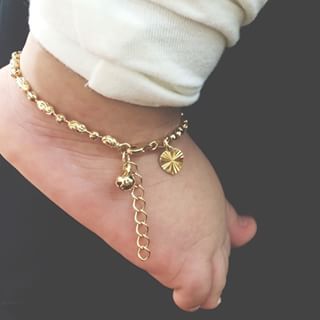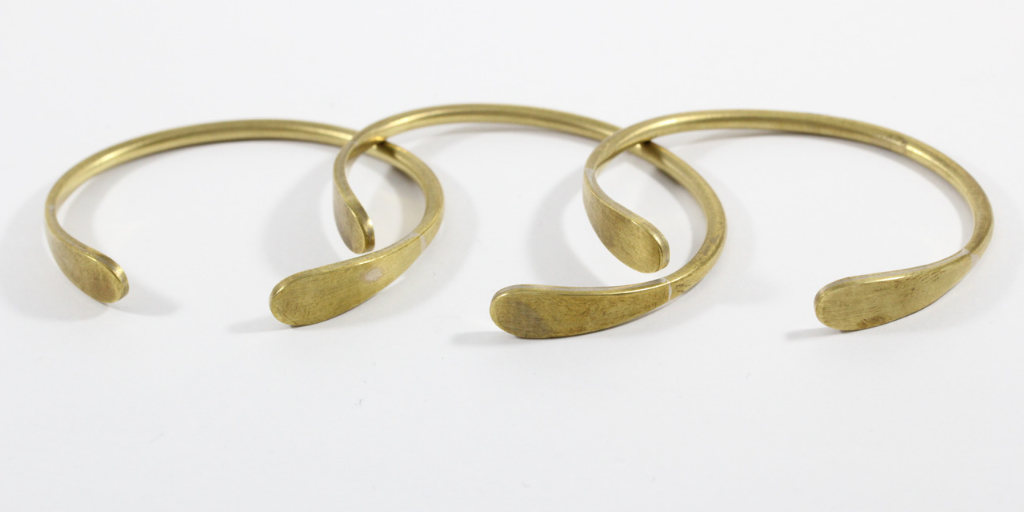How to Select the Best Ring Prong Setting to Keep Your Stone Secure
Written by Anna Currell
November 14, 2022
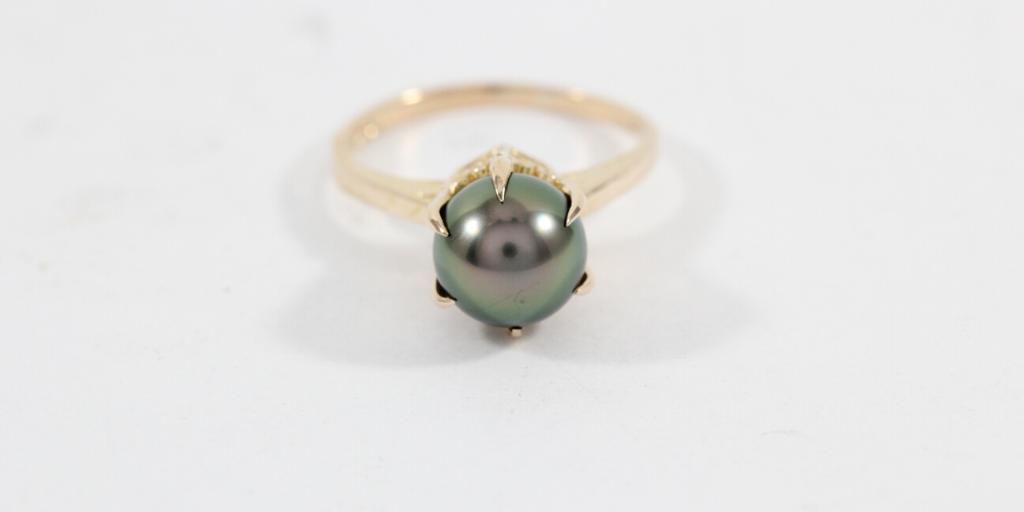
When you think about rings, one of the first things that comes to mind is probably the gemstone: its shape, size, color, carat, and quality. And while it’s probably not even the second, third, or fourth element to come to mind, ring prongs are an essential element to keeping your gemstone safe. If you’re looking for a new piece of jewelry and want to find the right type of ring prong, we’ve compiled some helpful information to guide you on your search.
The Pros and Cons of Prongs
Prongs are a type of setting used to keep gemstones secure in earrings, necklaces, and rings. They are little metal enclosures that fit up and around a gemstone to keep it in place. The setting includes a metal basket that fits around the back of the stone, and there are typically four to six prongs that hold the stone securely. Prongs are the best option to highlight your gemstone in the best possible light; they cover very little of the stone's surface area, allowing more of the gem to be seen. Prongs also allow more light to pass through the gem for extra sparkle and shine.
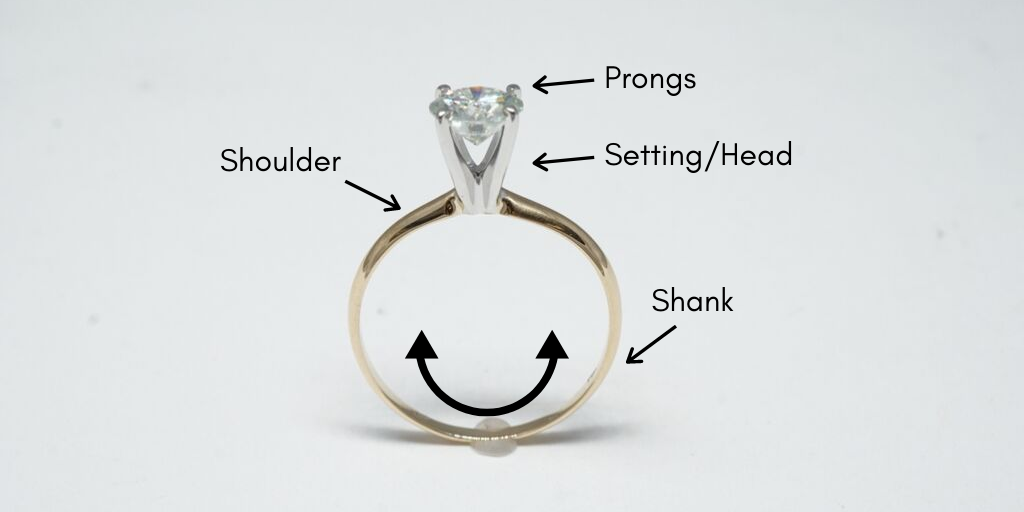
There are lots of other types of ring settings; for example, tension-set rings keep gems secure between two pieces of a metal band and bezel settings embed the gem directly into the metal of the band. While these options are sometimes more secure, they don’t place as much emphasis on the aesthetic of the stone. But if giving attention to your gemstone isn’t your number one priority or if you work with your hands often, then a bezel setting could provide more security so that your gemstone and the prongs holding it in place don’t come into contact with anything that could damage them.
While selecting your ring setting, consider the activities you’ll be doing while wearing your ring, how often you’ll be wearing it, and how important it is to you to show off as much of the gemstone as possible.
Types of Ring Settings
When you design a custom ring or shop for a new one, knowing the types of prongs can help you achieve the aesthetic you’re after. As with most elements of jewelry designs, prongs come in various sizes, shapes, and orientations to fit different needs and create different looks. Here are some of the most popular kinds of ring prong settings:
- Round (or Button): This type of prong looks like a small button sitting atop the stone. Each round prong is as simple as possible, making your gemstone the center of attention, like this ring from our sister brand, Miki & Jane.
- Claw: This prong is shaped like the talon of a bird. Its claw-like appearance has a pronounced, pointed tip, making it a slightly more detailed look than a round prong.
- Petite Claw: A petite claw is a smaller version of a claw prong. The petite claws cover less of the gemstone and let in more light, but can also be slightly less secure due to their size.
- Double Claw: In this style, every individual prong has two claws reaching up over the stone’s surface. It’s an ornate variation since you’ll end up with eight or 12 total claw prongs around the stone.
- Flat Tab: The flat tab is just like a button prong, but the part that sits on top of the stone to keep it in place is rectangular instead of round. It’s a great option for extra stability without too much emphasis on setting design.
- V-Prong (or Corner Prong): This type of prong is shaped like a V and fits tightly around the corner of a gemstone. If your gem is emerald-cut or marquise-shaped, then you’ll likely want to keep its pointed corners nestled into this type of close-fitting prong to show off as much of the stone as possible.
 High Prongs: This setting puts your gemstone on a pedestal by lifting it above the ring band. The height of this prong setting is great if you want to add dramatic flair to your ring.
High Prongs: This setting puts your gemstone on a pedestal by lifting it above the ring band. The height of this prong setting is great if you want to add dramatic flair to your ring. - Shared Prongs: Shared prongs hold two adjacent stones in place with only one prong between them. These prongs are especially useful in a circular design, either around a central gemstone or holding gems in place all the way around a band, like this ring from Miki & Jane.
When To Get Your Ring Prongs Restored
It’s perfectly normal for your ring prongs to wear down. Just like any other type of metal jewelry, the edges can start to smooth over, weakening the metal piece’s grip on the stone. Here are a few good signs it’s probably time to get your prongs restored:
- Your prong tips are snagging on your clothing.
- You notice that your gemstone is wiggling or feels loose.
- Your prongs look worn away or different from their original shape.
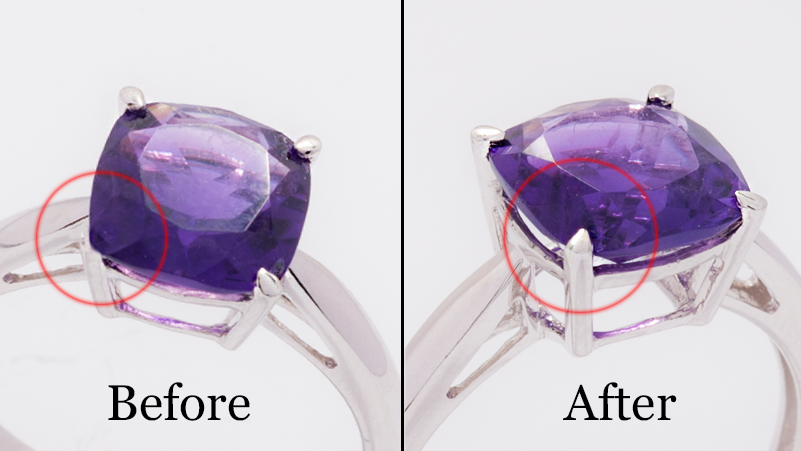
Your two best options for restoration are prong rebuilding and prong retipping. Rebuilding is required in more drastic instances where the prong is no longer viable and needs to be replaced completely. A retipping service will simply touch up the existing prong with extra layers of metal to ensure that it’s strong enough to safely and securely hold your gemstone in place. To restore your ring prongs or any kind of jewelry prongs, send your items into our team at Quick Jewelry Repairs. Our expert jewelers will make your jewelry prongs look and feel as good as new so your gemstones can shine on.

